Hoskins broke barriers in Texas League
Right-hander continued integration of Minor League Baseball
Photo: Dave Hoskins led the Texas League with 22 wins and ranked fifth with a 2.12 ERA for the Dallas Eagles in 1952. (Texas League)
(MILB.com) April 15, 1947 might be baseball’s moment to cherish, but the historical significance of that date transcends the sport. When Jackie Robinson stepped onto the diamond on a chilly spring afternoon at Brooklyn’s Ebbets Field as a member of the Dodgers, he left an indelible mark not only on the sport at which he excelled but on the arc of America’s future.
There were other firsts, of course. Perhaps none as notable or substantial as the first but no less important in helping right a wrong that for too long had been a fabric of society.
In the Texas League, April 13, 1952 is the watershed day. Coming 1,825 days after Robinson kicked open the gates, pitcher Dave Hoskins opened another door in the southwest. The former Negro Leaguer stepped on the mound for the Double-A Dallas Eagles in San Antonio. In doing so, he became the first African American to play in the Texas League’s modern era.
The right-hander began what became his best professional season by working in and out of trouble in his debut. Hoskins struck out four, and, despite walking seven and yielding eight hits, he limited the Missions to two runs in a complete-game win. A lefty-swinging outfielder during his time in the Negro Leagues, he had a pair of hits to boot. (more)
PVAMU SoA staff, students use 3D printer to create face shields for health care workers

Abel Simie, manager of the PVAMU Fabrication Center, models a face shield created using 3D printing.
The novel coronavirus (COVID-19) pandemic has shut in more than 90-percent of Americans, caused an economic downturn, and strained the global health care system. Given the rapid spread of the virus, there has been a global shortage of personal protective equipment (PPE) used by medical professionals to help protect themselves from contamination. This shortage has put many first responders, doctors, and nurses at high risk of infection. Prairie View A&M University’s Stephen Song, director of the Fabrication Center (Fab Center) in the School of Architecture (SoA), saw a way that the university could make a difference.
To help alleviate some of the risks of fighting COVID-19, Song, Abel Simie, manager of the Fab Center, graduate students Ruben Cheeks and Edgar Ruiz, and undergraduate student Yessenia Davila, are leading an effort to make face shield masks using the Fab Center’s 3D printers. Face shields, worn in conjunction with other PPE, like N95 masks, can increase the lifespan of the protective equipment. The face shields will be donated to health care workers who are bravely fighting against the COVID-19 pandemic.
“We hope that what we produce will assist health care workers, especially during this time when the supply of face masks is going through a severe shortage,” said Song. (more)
Virgil Lott:
Meet one of East Austin’s most legendary families
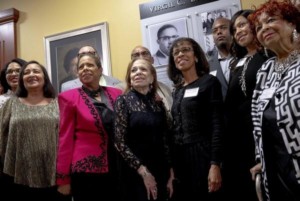
Back row, left to right: Ericka Dotson, Marshall Toliver, Keith Lott, Sean Lott. Front row: Harriett Lott, Adrienne Reeder, Joycelyn Toliver, Darellyn Biddle, Dionne Reeder, and Judge Harriet Murphy. They stand in front of a plaque dedicated to Virgil Lott at the UT Law School. (Nick Wagner/American-Statesman)
(Austin American-Statesman) Mixing in the grand open spaces of the University of Texas Law School last year, the descendants of Oral Rochester “O.R.” Lott Sr. and Viola Madison Lott greeted one another with exceptional warmth.
The distant memories of those ancestors, born of former slaves in the 1890s and builders of a thriving lumber and housing business in East Austin, lingered among the oldest guests.
Yet the assembled progeny were actually present to salute that historical couple’s son, the late Virgil C. Lott Sr.
In 1953, Virgil became the first African American to graduate from the University of Texas Law School. As part of a distinguished career of public service, he was also the first African American to sit on the bench of a court in Austin.
Since 2011, the UT law school has given out the Virgil C. Lott Medal to honorees who “made significant contributions to the legal profession and to the improvement of understanding among all peoples.”
Some of the recipients have been former Chief Justice of the Texas Supreme Court Wallace B. Jefferson, former Texas State Sen. Rodney Ellis, former U.S. Trade Representative Ron Kirk and Myra McDaniel, the first African American secretary of state of Texas. (more)
TIPHC Bookshelf
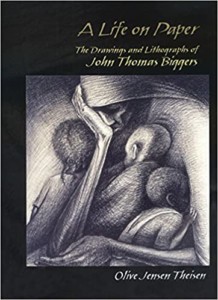 Published scholarship on black history in Texas is growing and we’d like to share with you some suggested readings, both current and past, from some of the preeminent history scholars in Texas and beyond. We invite you to take a look at our bookshelf page – including a featured selection – and check back as the list grows. A different selection will be featured each week. We welcome suggestions and reviews. This week, we offer, “A Life on Paper: The Drawings and Lithographs of John Thomas Biggers,” by Olive Jensen Theisen.
Published scholarship on black history in Texas is growing and we’d like to share with you some suggested readings, both current and past, from some of the preeminent history scholars in Texas and beyond. We invite you to take a look at our bookshelf page – including a featured selection – and check back as the list grows. A different selection will be featured each week. We welcome suggestions and reviews. This week, we offer, “A Life on Paper: The Drawings and Lithographs of John Thomas Biggers,” by Olive Jensen Theisen.
John Thomas Biggers (1924–2001) was a major African American artist who inspired countless others through his teaching, murals, paintings, and drawings. After receiving conventional art training at Hampton Institute and Pennsylvania State, he had his personal and artistic breakthrough in 1957 when he spent six months in the newly independent country of Ghana. From this time forward, he integrated African abstract elements with his rural Southern images to create a personal iconography. His new approach made him famous, as his personal discovery of African heritage fit in well with the growing U.S. civil rights movement. He is best known for his murals at Hampton University, Winston-Salem University, and Texas Southern, but the drawings and lithographs that lie behind the murals have received scant attention—until now.
Theisen interviewed Dr. Biggers during the last thirteen years of his life, and was welcomed into his studio innumerable times. Together, they selected representative works for this volume, some of which have not been previously published for a general audience. After his death in 2001, his widow continued to work closely with Theisen, resulting in a book that is intimate and informative for both the scholar and the student.
“Dr. Theisen had unequalled access to Dr. Biggers’ widow, as well as many of his friends and family. This unprecedented access gives the book a completeness and readability that sets it apart from other literature about the artist and gives the reader a sense of the character of the man as well as of his art. Its charm and readability will appeal to a wide range of readers.”—R. William McCarter, Regents Professor Art, University of North Texas.
This Week in Texas Black History
Apr. 12
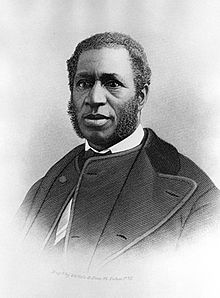
Richard Harvey Cain was born on this day in 1825 in Virginia to free parents. Cain was a political and civic leader of the Charleston, South Carolina reconstruction era. In 1848, he joined the African Methodist Episcopal Church and was a minister in Muscatine, Iowa. He became a bishop of the church in 1880 and was assigned to the Louisiana and Texas district. That same year, he helped found Paul Quinn College in Austin, serving as the school’s president until 1884. Three years later on January 18, 1887, Richard Harvey Cain died in Washington, D.C.
Apr. 13
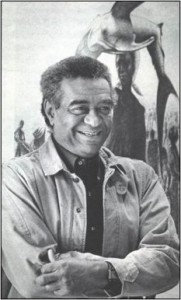
On this date in 1924, internationally acclaimed artist, sculptor, teacher and philosopher John Biggers was born in Gastonia, North Carolina. After studying at Hampston Institute and Penn State University, Biggers moved to Houston in 1949 and became founding chairman of the art department at Texas Southern University, then called Texas State University for Negroes. He held the position for 34 years during which he initiated a mural program for art majors in which every senior student was expected to complete a mural on campus: there are now 114 such murals on the Texas Southern campus. In 1957, with the help of a grant from UNESCO (United Nations Educational, Scientific and Cultural Organization), Biggers was one of the first American black artists to visit Africa to study African traditions and culture.
Apr. 13
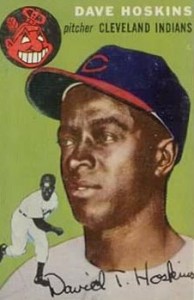
On this day in 1952 David Hoskins started for the Dallas Eagles making him the first black player in the Class AA Texas League. The Eagles were affiliated with the Cleveland Indians. Hoskins was born in Greenwood, Mississippi, on August 3, 1925 but moved to Flint, Mich. with his family in 1936. He played for the Homestead Grays in the Negro American League and in 1948 broke a color barrier as an outfielder with Grand Rapids of the Central League. With the Eagles, Hoskins was an immediate draw and by the season’s end had pitched before sellout crowds at every stadium in the league and led the league in wins (22), complete games (26), innings pitched (280), and had an ERA of 2.12. He also hit .328 and was an all-star selection. He was inducted into the Texas League Hall of Fame in 2004. In 1953, Hoskins was signed by the Indians and played for two seasons, 1953-54. For his Major League career, Hoskins was 9-4 with a 3.81 ERA and .227 batting average.
Apr. 14

On this day in 1935, Julius “Jay” Parker, Jr. was born in New Braunfels. Parker attended Prairie View A&M University where he completed the Reserve Officers Training Corps curriculum in 1955 and graduated with a degree in Biology/Chemistry. Parker rose to the rank of major general and became the highest ranking African-American Military Intelligence Officer in the history of the U.S. Army. He held a wide variety of command and staff positions culminating in his assignment as Commanding General, United States Army Intelligence Center and School, from 1985 to 1989. As the first Chief of the MI Corps, Parker oversaw its activation and created the MI Corps motto, “Always Out Front.” Parker retired in 1989 and was inducted into the Military Intelligence Hall of Fame in 1990. He is also a direct descendant of Quanah Parker, the last chief of the Comanche nation.
Apr. 14
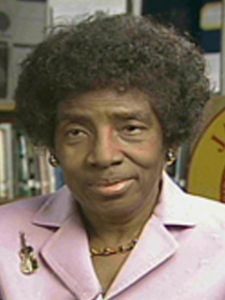
Born in Houston on this day in 1938, Gloria Dean Randle Scott became the first African-American president of the Girl Scouts of America. A civic and educational leader, she took the post in 1975. Scott graduated from Jack Yates High School and received post graduate degrees, including education, from Indiana University. She had been a Junior Girl Scout at and later served as President of the Negro Girl Scout Senior Planning Board. In 1987, she was selected as president of Bennett College, in Greensboro, North Carolina. In 2001, she returned to Texas and was very active in the Corpus Christi community, including the Black Chamber of Commerce.
Apr. 16
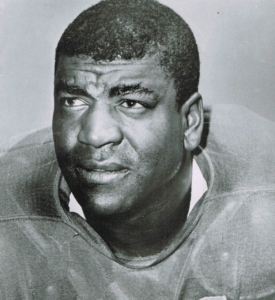
National Football League defensive back Dick “Night Train” Lane was born in Austin on this day in 1928. After serving in the Army during World War II and the Korean War, Lane was signed as a free agent in 1952 with the Los Angeles Rams, though he’d only played at Austin Anderson High School and Scottsbluff (Neb.) Junior College. During his 13-year career, Lane was known as ferocious, intimidating hitter and was responsible for the banishment of the clothesline tackle. Lane’s 14 interceptions in 1952 still stands as an NFL record for rookies. In 1969, just four years after his retirement, he was voted the best cornerback in the first 50 years of the NFL, and in 1974 was inducted to the Pro Football Hall of Fame. In 2001, he was inducted into the Texas
Apr. 17
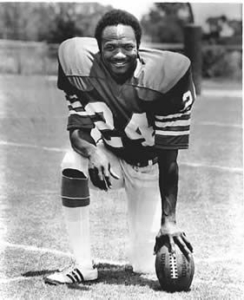
Two-time All-Pro running back Delvin Williams was born on this day in 1951 in Houston. Williams graduated from Kashmere Gardens High School in 1970 and was a Parade Magazine All-American and one of the most sought after prep running backs in the country, recruited by every major college football program. Williams chose the University of Kansas and four years later became a second round pick of the San Francisco Forty-Niners. He thrived in the National Football League for eight seasons, becoming the first player in NFL history to rush for 1,000 yards in a season for two different teams (Niners and Miami Dolphins). Williams was also the first player in NFL history to set rushing records for two different teams, and to be named to the Pro Bowl for both an AFC & NFC team.
Blog: Ron Goodwin, Ph.D., author, PVAMU history professor
Ron Goodwin is an assistant professor of history at Prairie View A&M University. Even though he was a military “brat,” he still considers San Antonio home. Like his father and brother, Ron joined the U.S. Air Force and while enlisted received his undergraduate degree from Texas Lutheran University in Seguin, Texas. After his honorable discharge, he completed graduate degrees from Texas Southern University. Goodwin’s book, Blacks in Houston, is a pictorial history of Houston’s black community. His most recent book, Remembering the Days of Sorrow, examines the institution of slavery in Texas from the perspective of the New Deal’s Slave Narratives.
Recent Posts
WWJD
Several years ago, these letters, “WWJD?” seemed to be everywhere. We all know they represent “What Would Jesus Do?” I think these letters and the question were meant to challenge society to consider the moral implications of their everyday decisions. Now in this new COVID-19 reality, WWJD may have new meaning. Since my father…(more)
For every beginning there’s an end
To live is to die. Every beginning has an end. That’s not a very pleasant way to begin, but as Believers we are on a journey that ends with the grave. As a child I watched my mother deal with her mother as she entered the last chapters of her life. I didn’t fully understand what was going on, but I remember my mother assisting my grandmother to her various appointments. As life would…(more)
Submissions wanted
Historians, scholars, students, lend us your…writings. Help us produce the most comprehensive documentation ever undertaken for the African American experience in Texas. We encourage you to contribute items about people, places, events, issues, politics/legislation, sports, entertainment, religion, etc., as general entries or essays. Our documentation is wide-ranging and diverse, and you may research and write about the subject of your interest or, to start, please consult our list of suggested biographical entries and see submission guidelines. However, all topics must be approved by TIPHC editors before beginning your research/writing.
We welcome your questions or comments. Please contact Michael Hurd, Director of TIPHC, at mdhurd@pvamu.edu.
